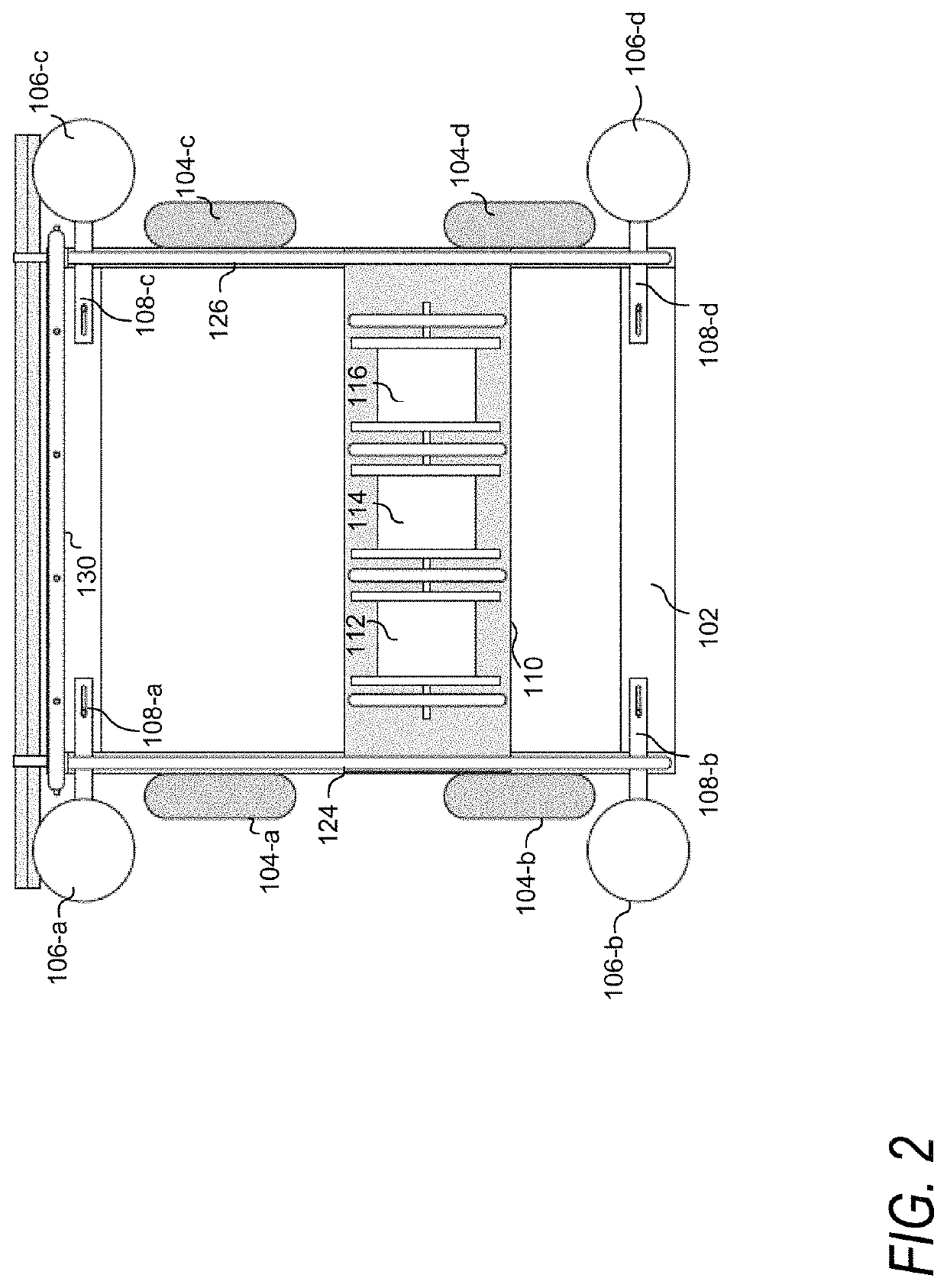System and method for cleaning and sanitizing the interior of a freight container
a freight container and interior cleaning technology, applied in the direction of vehicle cleaning, vehicle maintenance, cleaning using liquids, etc., can solve the problems of spoiled or contaminated perishable freight, high labor intensity, and high cost of manually washing the freight container, so as to facilitate the deployment
- Summary
- Abstract
- Description
- Claims
- Application Information
AI Technical Summary
Benefits of technology
Problems solved by technology
Method used
Image
Examples
Embodiment Construction
[0047]Introduction
[0048]The present disclosure includes a device, which may include an automated wash rig that can be transported by a mobile platform, that can be used to clean the interior surfaces of a freight container. The interior of the freight container may include a floor, a first wall (e.g., the left side wall), second wall (e.g., a right side wall), a ceiling, and a bulkhead (e.g., the wall opposing the opening of the freight container).
[0049]The mobile platform may be used to align the automated wash rig with the opening of the freight container. Initiating the washing process may involve the wash rig being propelled forward into the freight container. As the wash rig traverses the length of the freight container, the wash rig may have features or components that are used to wash and dry (e.g., to make the surface free of collected moisture) the surfaces of the interior of the freight container. For instance, the wash rig may wash the surfaces by discharging a cleaning f...
PUM
 Login to View More
Login to View More Abstract
Description
Claims
Application Information
 Login to View More
Login to View More - R&D
- Intellectual Property
- Life Sciences
- Materials
- Tech Scout
- Unparalleled Data Quality
- Higher Quality Content
- 60% Fewer Hallucinations
Browse by: Latest US Patents, China's latest patents, Technical Efficacy Thesaurus, Application Domain, Technology Topic, Popular Technical Reports.
© 2025 PatSnap. All rights reserved.Legal|Privacy policy|Modern Slavery Act Transparency Statement|Sitemap|About US| Contact US: help@patsnap.com



